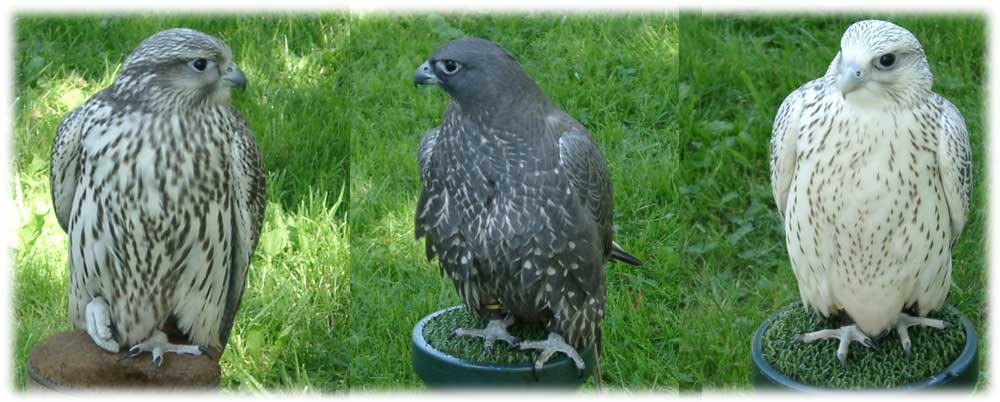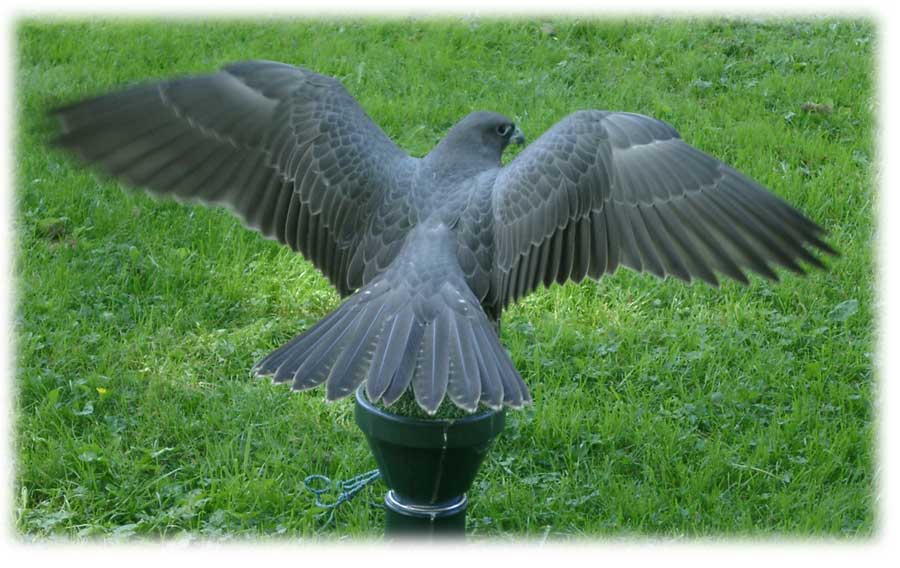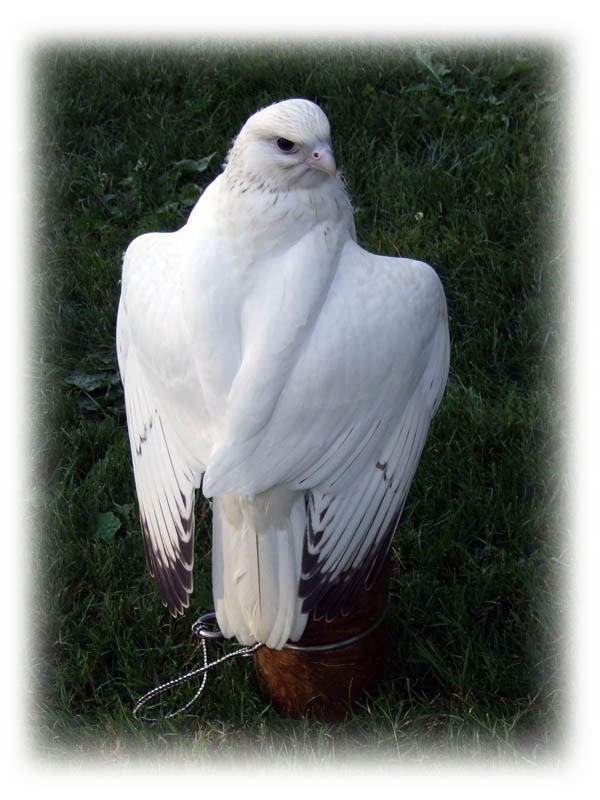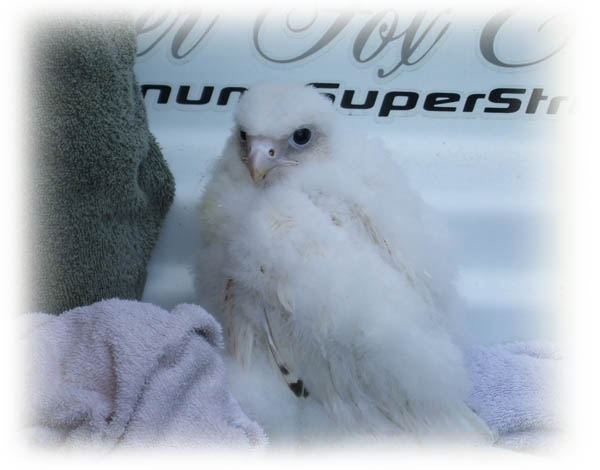This bird is native to North America and Europe and has traditionally been the most prized and sought after birds for falconry.
Plumage
The immature plumage of the Gyrfalcon ranges from gray-black to almost pure white. The further north the bird's habitat, the more likely it is to be white.
 |
Three different Gyrfalcons. |
 |
An immature Gyrfalcon pumping its wings. |
 |
A beautiful white Gyrfalcon. |
 |
A Gyrfalcon chick. |
Typical quarry caught with the Gyrfalcon are large birds including grouse, pheasant, waterfowl, and ptarmigan and even rabbits or snowshoe hares. In the wild this bird most typically hunts ptarmigan with the addition of Arctic hare, geese, ducks, and even rabbits.
Their flight style is rapid with powerful wing beats and periods of gliding almost like a Goshawk. Although they are slower than the Peregrine, they appear to have more endurance. The Gyrfalcon's typical hunting style is to pursue, sometimes over many miles. Telemetry is almost required to fly this bird. It attacks in a style of shallow stoops and zig-zags and will pursue quarry for miles. When it closes the Gyrfalcon climbs, twists to cross over the prey and attacks with a diagonal strike slashing the prey. The Saker falcon has a very similar attack style and it is thought that these two are closely related.
Trivia
The Gyrfalcon is also called the Gyr, jer-falcon, gerfalcon, Greenland falcon, and Iceland Falcon. These powerful birds are common hybrids with Peregrines, Merlins, and other falcons.
The Gyrfalcon really loves flying to the lure. This makes them, and their hybrids, an excellent bird for abatement.
The Gyrfalcon was the most prized bird used in falconry, even today. The Icelandic Gyrfalcons were the property of the King of Denmark and Iceland. These birds were given as gifts to heads of state and used as pay or ransom. Valued for their power as much as their appearance, they are an effective hunter.
Many knowledgeable falconers insist that Gyrfalcons must be introduced to the lure and hunting in their first year. A bird that is not stooping hard to the lure and taking game will not even be a great hunting bird, unlike the Peregrine which appears more flexible in its skill acquisition.
The males are called "Jerkins".
These birds tend to be sensitive to heat and susceptible to infections, particularly asper.
Immature Gyrfalcons tend to have bluish ceres and feet while adult Gyrfalcons have yellow to orange colored skin.
Gyrfalcons prefer open country. Arctic Gyrfalcons prefer to nest on sea cliffs, although some Gyrfalcons will nest in trees. In their typical cliff ledge, they will lay eggs on an accumulation of their own pellets or the plants that grow there. As they frequently nest on rocks, they tend to prefer perches that simulate this.
Links
https://www.mbr-pwrc.usgs.gov/id/framlst/i3540id.html